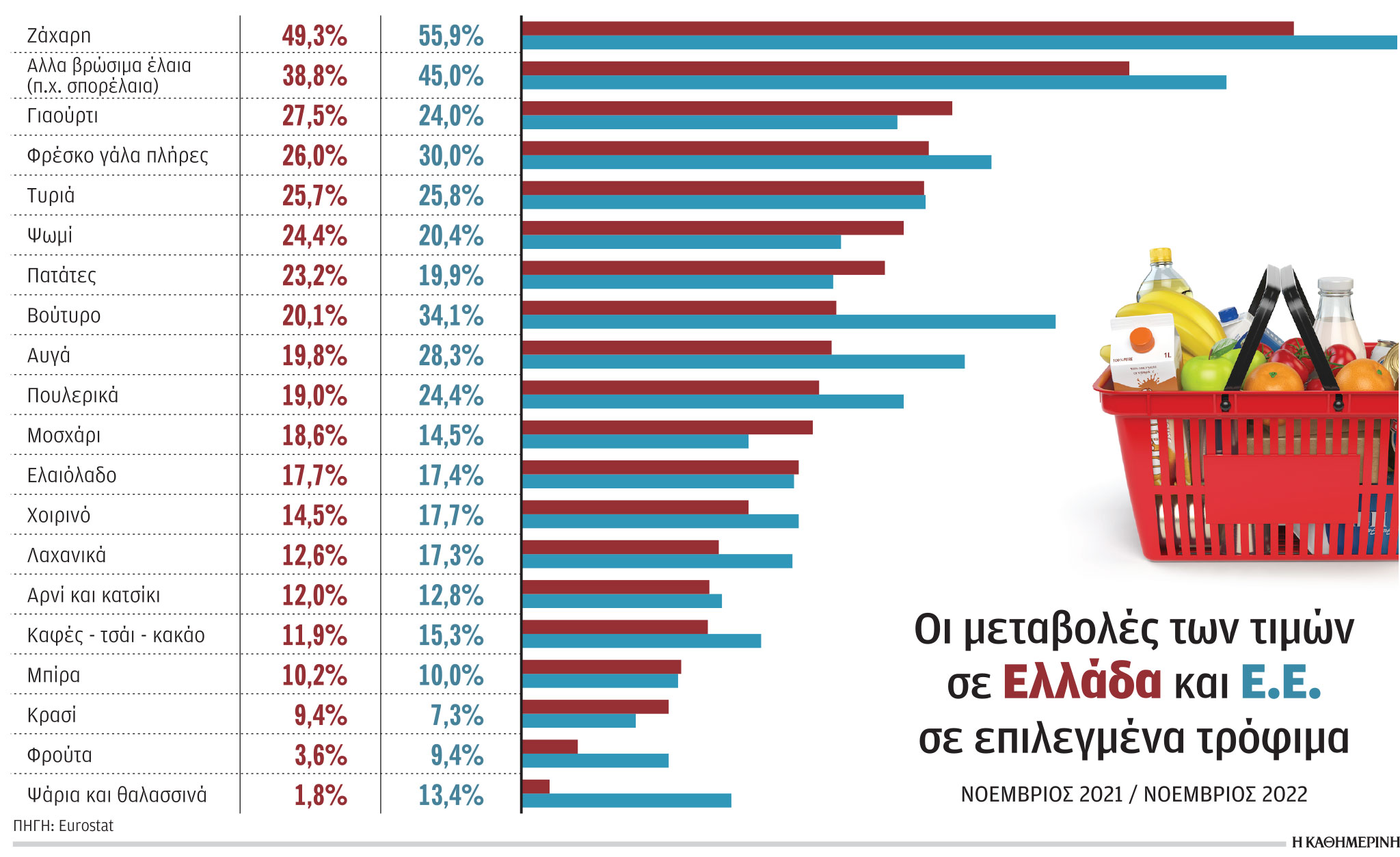
Breath 50% arrived rising prices successively main products in Greece over the past 11 months, which was affected by its growth energy costbut also a number of other factors related to the uninterrupted supply of raw materials due to the war in Ukraine.
Although this phenomenon is not Greek but global, with stronger inflationary pressures in the Old Continent, data Eurostat show that, in some cases, food prices rose by Hellas faster than the average growth rate in European Union. This of course has a lot to do with whether the products are imported or not, with the structure of production in Greece, and also with the size of the market, a small market that is not open to price competition, mainly from multinational companies. food groups.
Even in cases where food prices in Greece have risen at a slower rate than in the EU, this does not mean that the blow has not been and will not continue to be hard on Greek households. Especially as purchasing power remains subdued, barely recovering from the memorandum era and with rising inequality over the previous two years of the pandemic. What makes rising food prices even more painful for households is that, according to Eurostat, Greece ranks third in terms of the percentage of spending on food, drink and catering (29.6% in 2020 and 25.3% in 2021).
From a study of 20 selected foodstuffs, prices have risen from 1.8% (for fish and seafood) to 49.3% (for sugar) over the past 12 months, while prices for some of the most basic foodstuffs have risen close to up to or more than 20%.
Greece ranks third in spending on food, drink and catering after Romania and Estonia.
This category also includes other edible oils (mainly vegetable oils and mainly sunflower oil, the price of which increased sharply after the start of the war in Ukraine, since the country in question is one of the largest producers of this product). During the year, the price increased by 38.8%, while at the EU level by 45%.
The price of products, for which a significant decrease in sales was recorded on the domestic market, increased by 27.5%, by 26% – fresh milk, by 25.7% – cheese, by 24.4% – bread, the products of which are also directly affected by the war in Ukraine due to disruptions in the international soft wheat market. Potato prices went up by 23.20%, butter – by 20.10%.
Of the products examined in the Eurostat survey, a single-digit price increase was recorded in Greece for only three – fish and seafood (1.8%), fruits (3.6%) and wine (9.4%).
Cases in which Greece has seen higher food price increases compared to the EU are in yogurt, bread, potatoes, beef, olive oil, beer and wine. In general, food inflation in Greece in November 2022, based on data from the Harmonized Consumer Price Index published by Eurostat, was 15.2% compared to 18.3% in the EU. and 16.4% in the eurozone.
Whether there has finally been a de-escalation in food prices in the coming period in Greece, or whether food inflation will continue to rise despite lower energy prices, we will know first of all next week when Eurostat announces on January 6 its inflation estimates for December. and data on the national consumer price index is due to be announced by the Hellenic Statistical Office (ELSTAT) on 12 January.
Source: Kathimerini
Lori Barajas is an accomplished journalist, known for her insightful and thought-provoking writing on economy. She currently works as a writer at 247 news reel. With a passion for understanding the economy, Lori’s writing delves deep into the financial issues that matter most, providing readers with a unique perspective on current events.